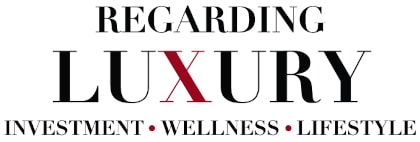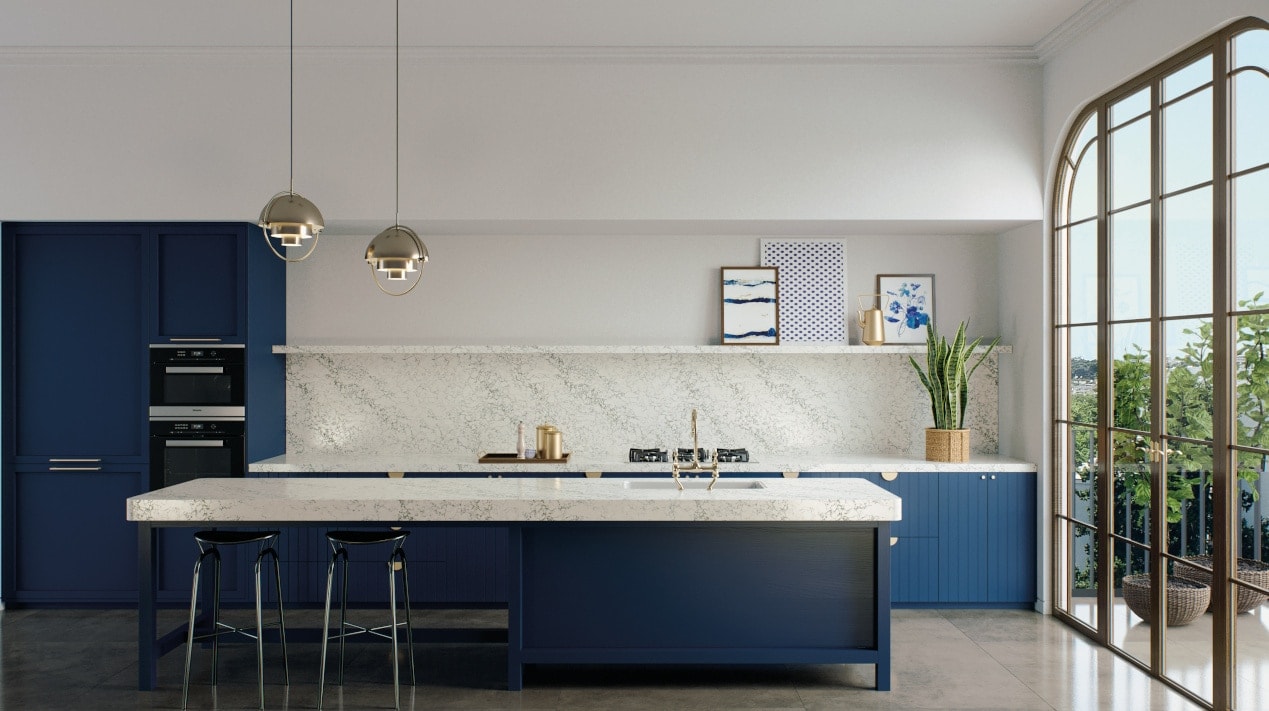We can all agree that 2020 was quite a year! The global pandemic kept us at home in ways we never could have imagined. From no travelling or attending music festivals to being locked out of restaurants and not seeing our loved ones, it’s been quite the ride. Thankfully, there’s the arrival of an effective vaccine. That means by the end of 2021, we’ll be back to hugging and entertaining our friends and family.
Related: Property Profile: Character apartment in historical conversion in Rosedale neighbourhood up for rent
One positive outcome of spending more than 14 months inside has been a renewed love and appreciation of our home and the space we inhabit. Part of that collective realization has included more time in the kitchen and concerted efforts to get back to basics. That includes preparing food from scratch, including making bread and experimenting with new foods and recipes. Along with that rejuvenated energy is the desire to become more environmentally conscious. It’s more about reducing our footprint and looking for sustainably sourced products that stand the test of time.
Canada’s best luxury website: Coverage of this year’s Toronto Interior Design Show
At this year’s Toronto Interior Design show, held from May 10-12, the overall theme was sustainability in architecture, construction and design. Of particular interest were the trends occurring in the future of kitchens, with the spotlight on designers and manufacturers working hard to bring together sustainability with functionality, exceptional design and quality.
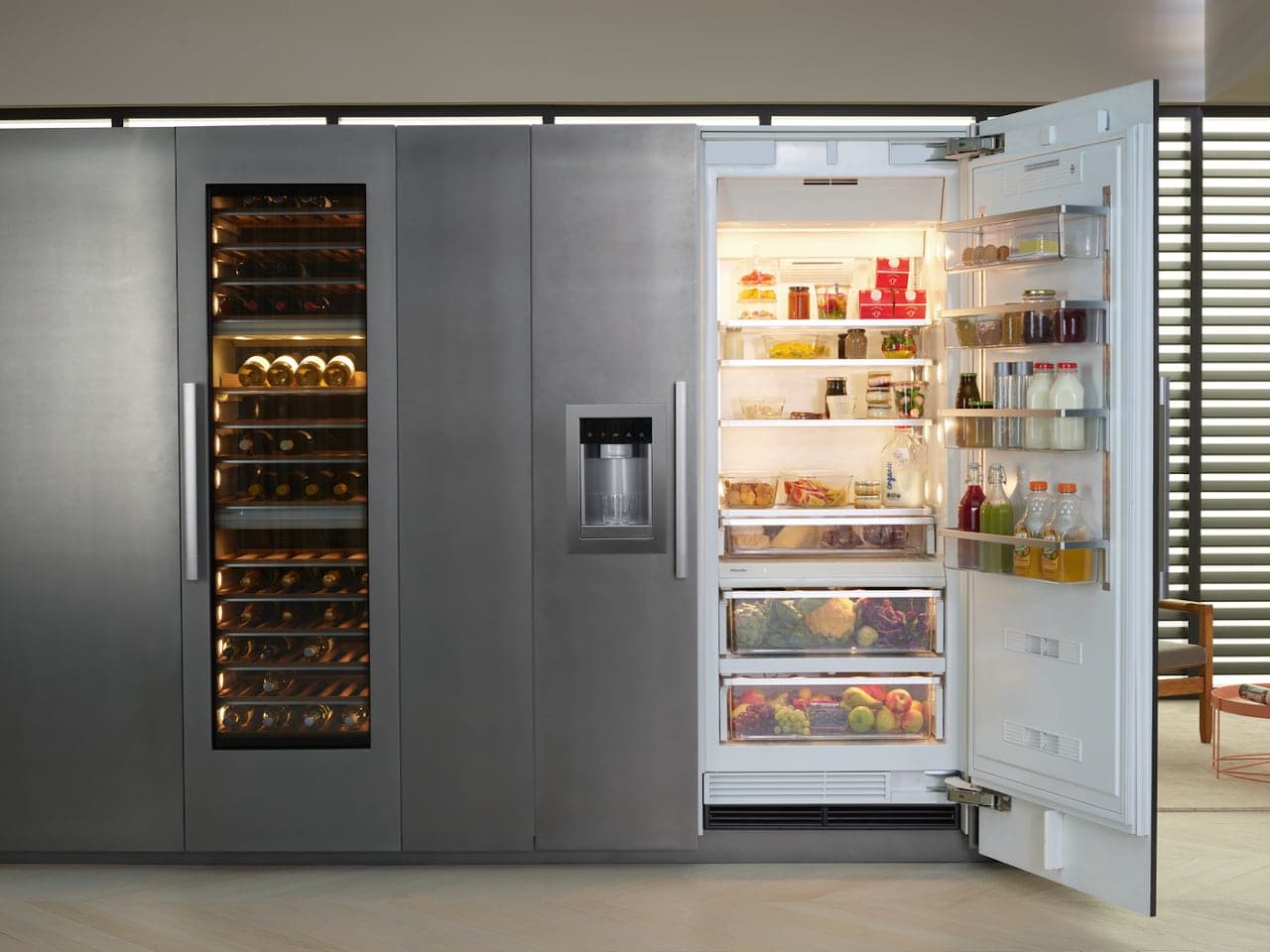
Miele
On the morning of Tuesday, May 11, moderator Marla Baker, a business development specialist and design community supporter, spoke with three industry experts on “The future of kitchen design with sustainability in mind.” On the panel were Krystal McNaughton, manager at Aquavato; Amy Medeiros, sales manager at Irpinia Kitchens, and Jane Lockhart, principal at Jane Lockhart Design, representing Signature Suite Kitchen Design.
MIND: Moving in new directions
The general consensus all around was that the future of kitchen design is moving away from the traditional triangle setting of fridge, sink and stove. It’s heading into one that better suits the needs of our current environment. This includes smarter working spaces, sustainably sourced materials, and energy-saving fittings. Also, it includes fixtures that are durable and long lasting in the three function-driven areas of the kitchen – plumbing, appliances and cabinetry.
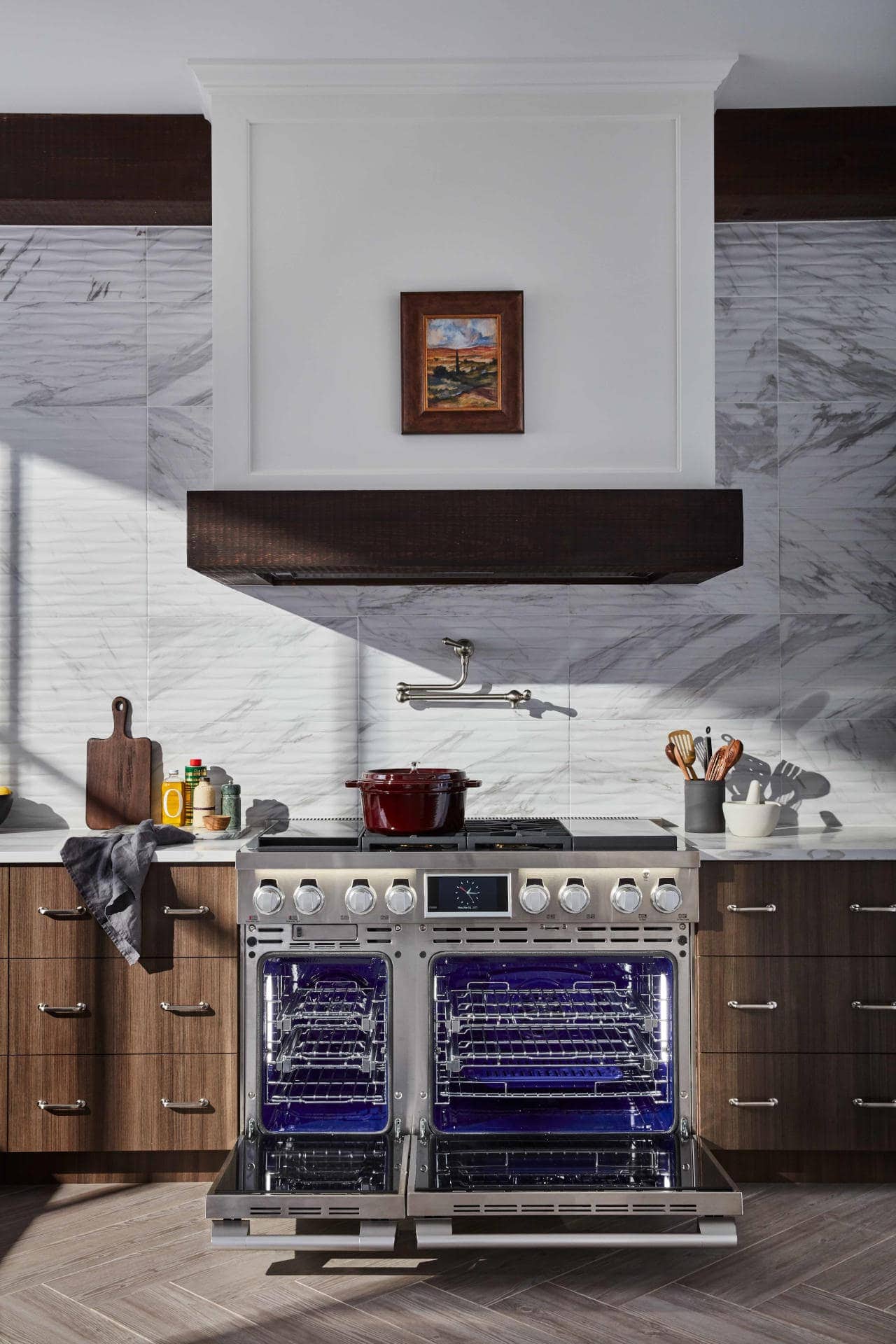
Jane Lockhart Design
“The future in kitchen design is really moving in another direction more than we ever expected,” says Lockhart. “You look at the pandemic. We have so many more home cooks now who are really interested in having a restaurant experience. That is completely different than what was in the past. So that in itself is changing how we look at our kitchen, how we store stuff in our kitchen, how we entertain. And that is totally changing our direction.”
Water: Everything including the kitchen sink
A happy marriage of kitchen design and the water we use to drink and cook with has to do in part with reducing consumption, but also the materials that are used in our sinks and faucets.
“Sustainability within the plumbing space for years has been about water reduction. That makes sense, water flows though all of our products,” says McNaughton. “But in more recent years, it’s been amazing to see a shift toward other areas. Are we considering the materials we use and the life cycle of the product? Where are we getting those materials from, how long will it be in use and what is the disposal and decommission going to look like?”

Caesarstone
Consumers should be looking for sinks made of recyclable materials such as stainless steel, cast iron and concrete or terrazzo. Beautiful and functional, these materials are durable, long lasting and can all be melted down and reused when they need to be replaced. Choosing a touchless or smart-touch faucet, which is very easy to turn off, reduces the amount of water used.
Other home design trends to consider are tankless water heaters and switching to low-flow faucets, something McNaughton says doesn’t have to be perceived as a lower-quality product. “New technology, air induction technology, gives a feeling of greater flow rates, spreading that water out in a greater surface area so that even with a low-flow faucet you can have that spa experience.”
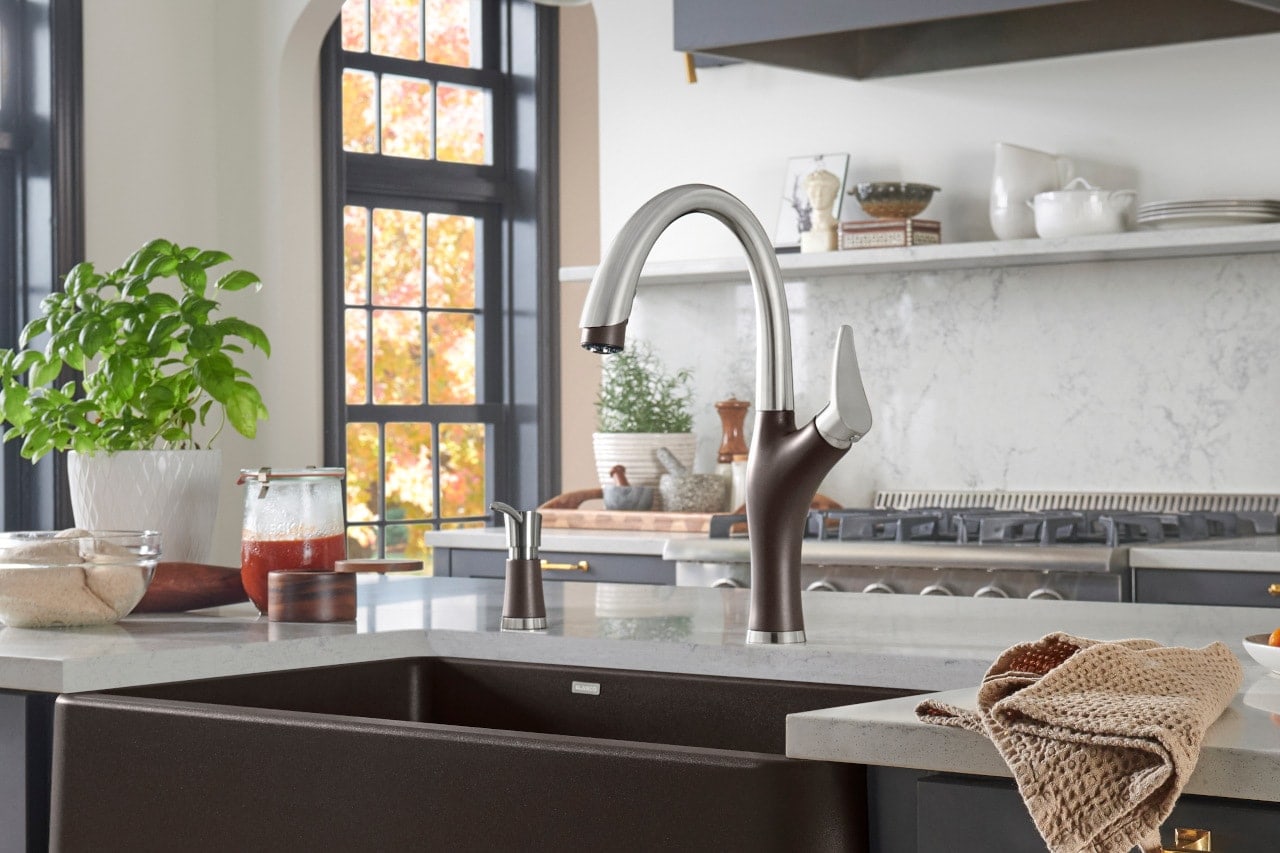
BLANCO Faucets
Appliances: When less really is more
We all have a fridge, stove and for the most part, a dishwasher in our kitchen. And with these three much-used appliances, manufacturers have really embraced the notion of sustainability, creating designs that function more efficiently and are energy-saving.
Trending away from the traditional multiple-appliance kitchen are stoves that offer up a variety of heat sources in one product. “Kitchen appliance designers have said, ‘Can we instead of having multiple appliances around the kitchen that stay plugged in and absorb phantom energy, is it possible to put it all into one’?” explains Lockhart.
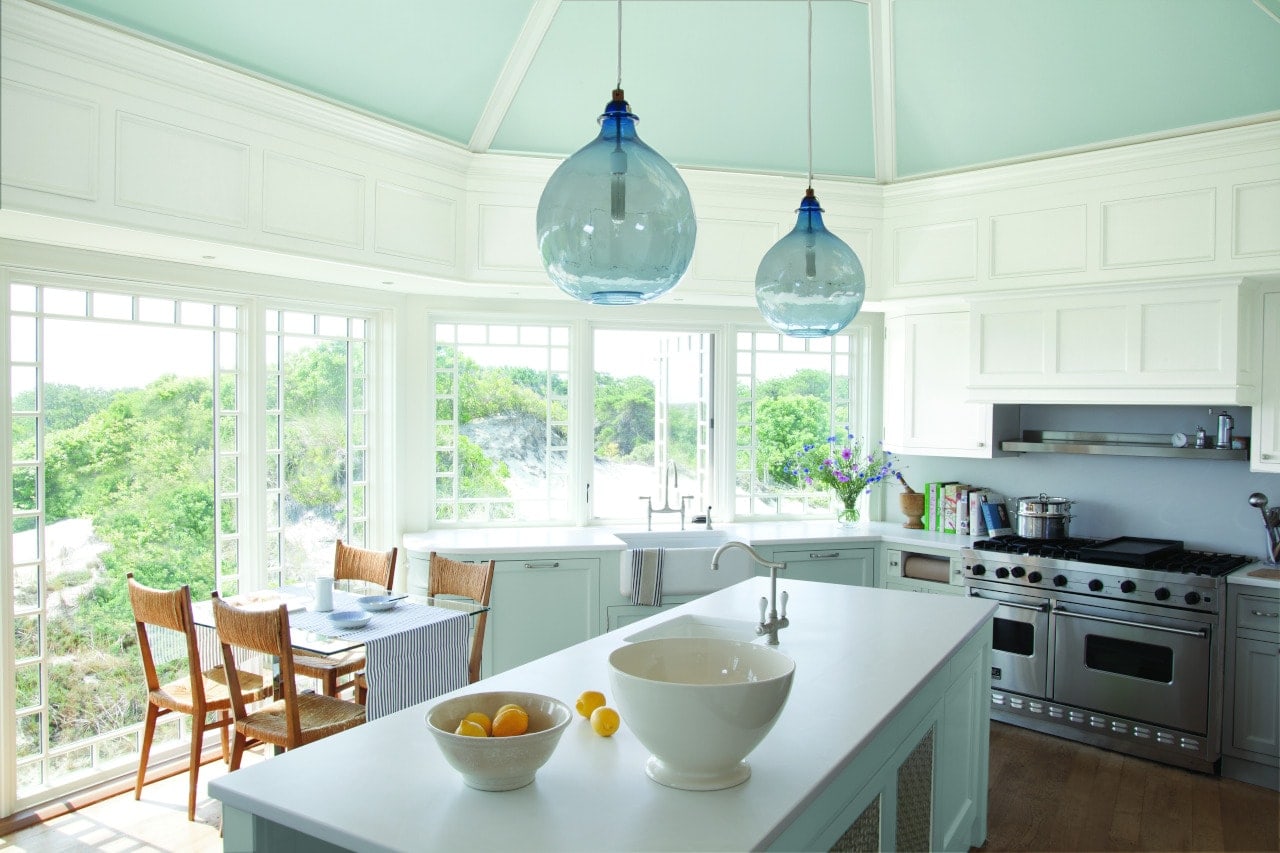
Benjamin Moore
Sustainable kitchens: Focus on energy-saving products
An example of this kind of energy-saving product includes a built-in range with a convection oven and a stovetop comprised of a built-in sous vide and gas and induction burners. Sous vide cooks food slowly, maintaining a set temperature for precision cooking while an induction stovetop is highly energy efficient, boiling water in 90 seconds.
When it comes to your dishwasher, probably the newest technology to ask for is steam. “With steam technology in a dishwasher cycle, the heat generated from the steam helps to clean your dishes better and there is no pre-wash required,” says Lockhart. As well, she adds that better designed interior washing arms now spin in multiple directions, using less water and cleaning better.
Finally, with your fridge, the trend is to find one with stainless steel interiors, less plastic, and better recycling of air so there is less food spoilage.
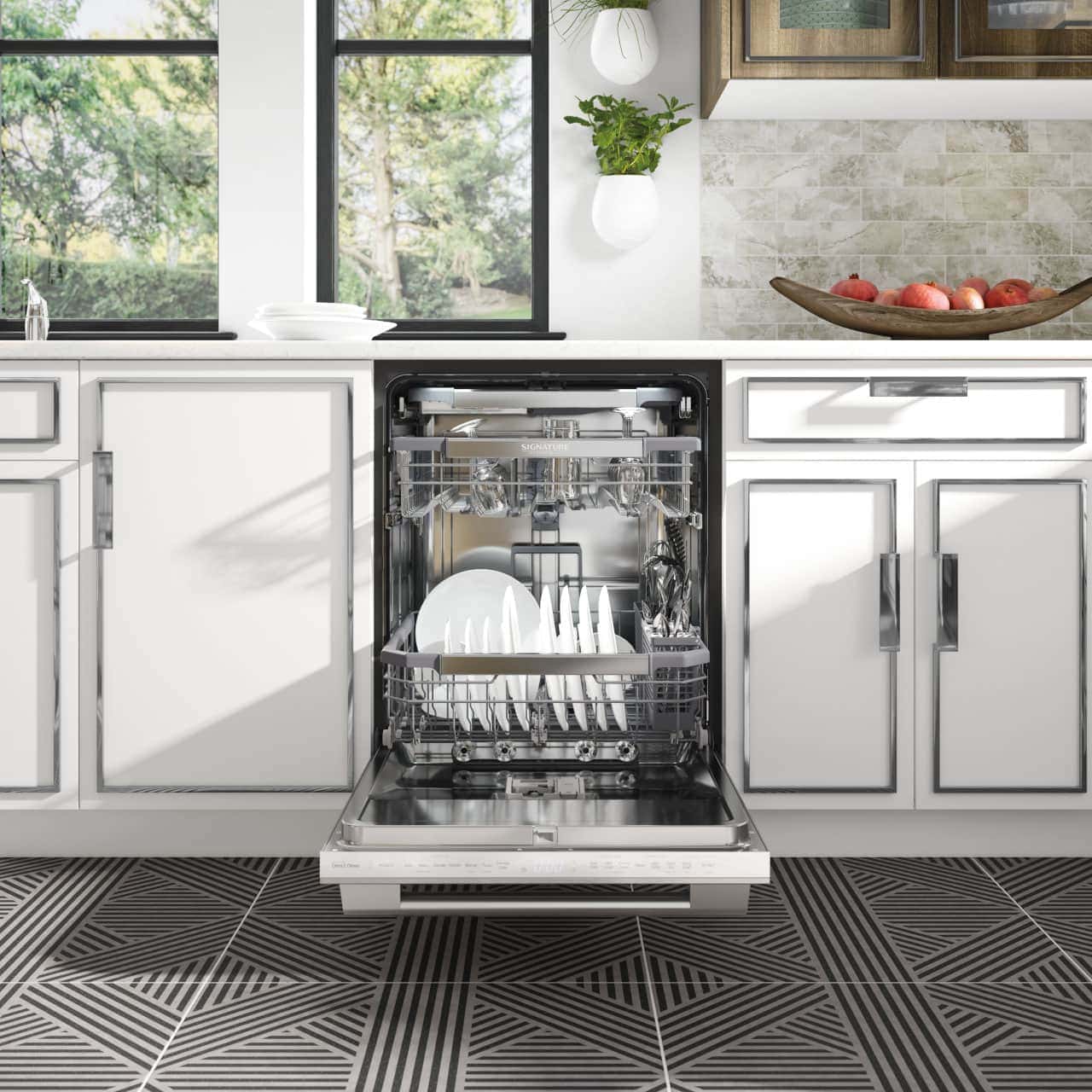
Jane Lockhart Design
Cabinetry: More than just a pretty face
We never seem to have enough cupboard space, especially in the kitchen where we need to store dinnerware, glassware, pots, pans, pantry items and more. The design of cabinetry may play a key role in how we enjoy our kitchen environment. But how does that take into consideration a push towards sustainable kitchens?
“Where is kitchen design going? From the manufacturing perspective, this means from the inception we are actively selecting products with sustainability in mind, and this means material procurement, sourcing material with a high emphasis on quality,” says Medeiros.
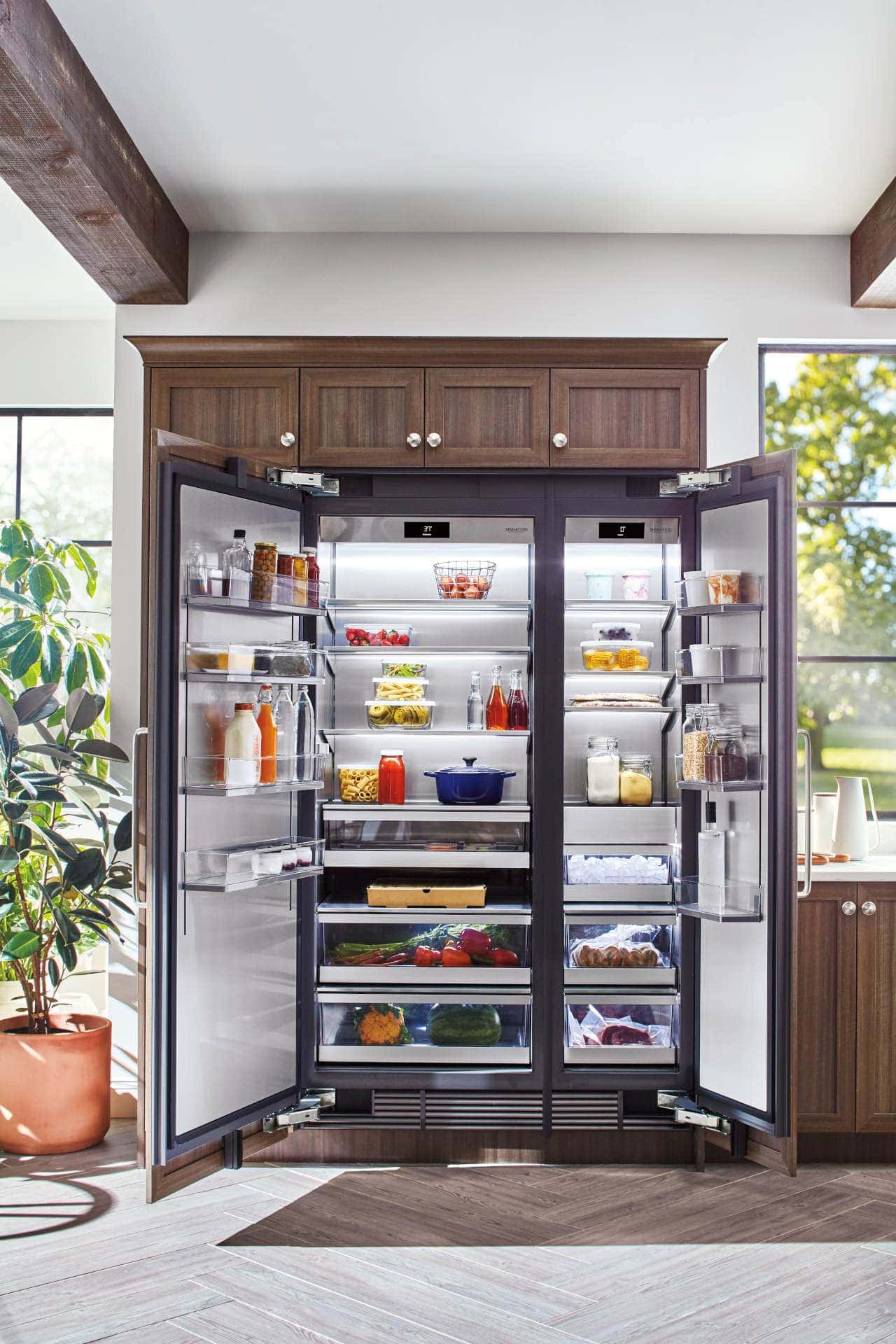
Jane Lockhart Design
“[But] sustainability in cabinetry means more than just sourcing eco-friendly material,” she adds. “Proper cabinetry design plays a huge role in the longevity and function of a kitchen. Creating a space that stands the test of time means less in landfills. We’re not just filling a space with beautiful cabinetry, there is a function behind the aesthetic that makes the kitchen long lasting.”

Miele
There is a trend toward painted cabinetry, which has people concerned about emissions. Happily, the home design industry has evolved in a way to offer alternatives to paint and stains. That includes better water-based paint. In terms of the cabinets themselves, the best choice is designer laminates or PET products, which are offered in soft touch or high gloss options. The benefits of these products are that they help save our forests and are eco friendly.
Finally, in an effort to capitalize on all available space, cabinets are now being installed right up to the ceiling. This has given rise to innovative products such as integrated stepladders and toe-kick drawers.
Net-Zero Homes?
You may not be able to live in a net-zero home. But you can take steps toward a more sustainable living space that is also functional and aesthetically pleasing. Perhaps you are experiencing a renewed enjoyment in your kitchen, by incorporating some of the suggestions above. With that you can easily turn it into a more sustainable space that captures the spirit of a better future.
TOP IMAGE: CAESARSTONE
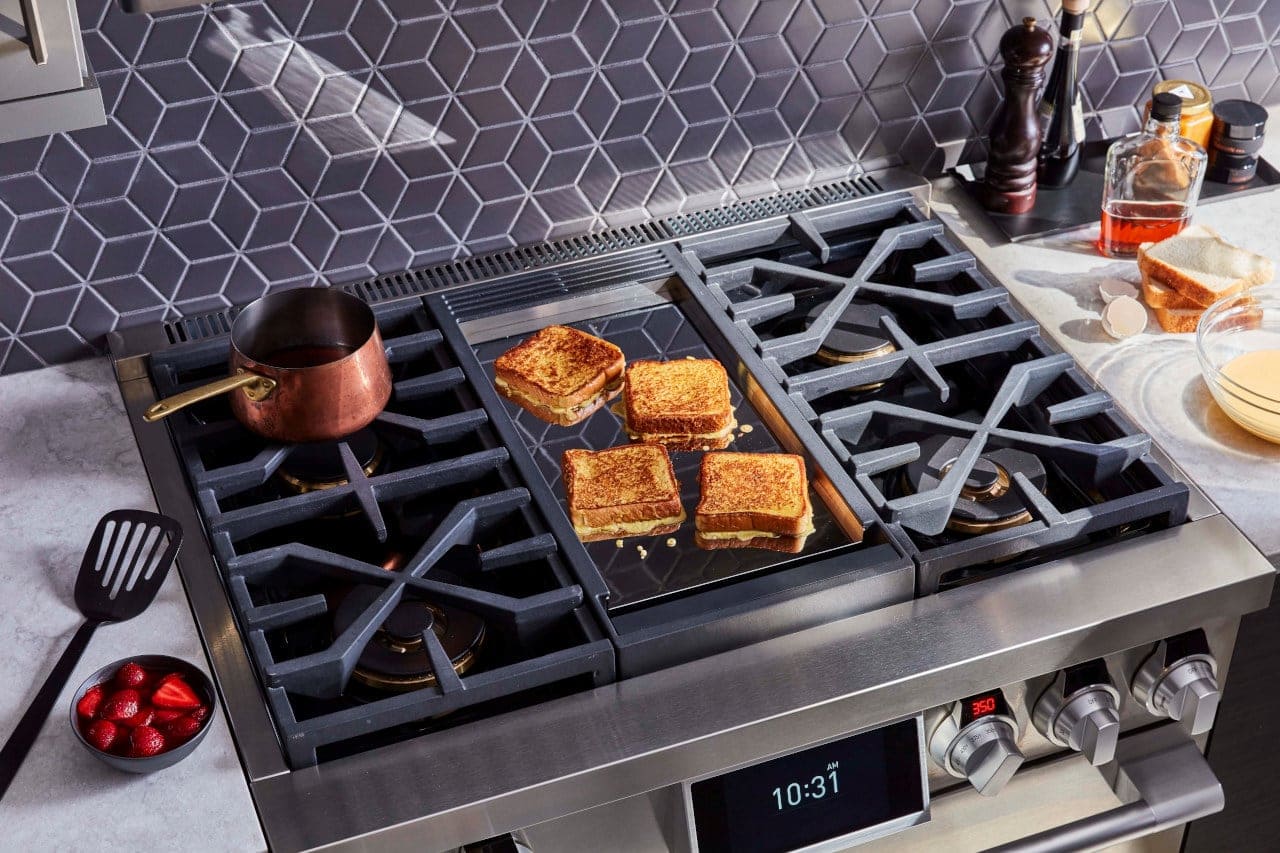
Jane Lockhart Design

Marlene Eisner is a freelance writer and editor. She is currently the editor of RENO+DÉCOR magazine (National) and New Home + Condo Guide magazine (Vancouver). She also writes, edits and publishes content for websites and edits master’s and PhD theses and memories.
